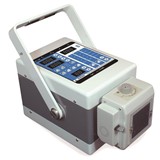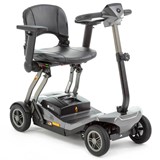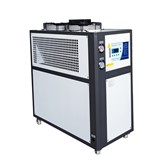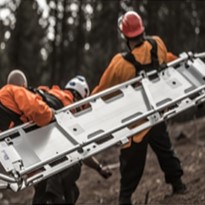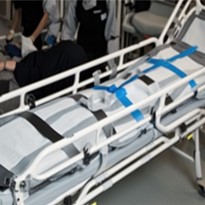In the realm of emergency response and disaster management, the role of rescue stretchers cannot be overstated. These vital tools serve as lifelines during crises, facilitating the safe and efficient evacuation of injured individuals from perilous situations. In this comprehensive exploration, we delve into the world of rescue stretchers, shedding light on their significance, historical context, and their pivotal role in bolstering emergency preparedness.
I. Introduction to Rescue Stretchers and Their Importance
A. Definition and Purpose
Rescue stretchers, often referred to as evacuation or emergency stretchers, are specialized medical devices designed to safely transport injured or incapacitated individuals in emergency situations. These stretchers are meticulously engineered to withstand the challenges posed by the harsh environments encountered during evacuations, search and rescue operations, or mass casualty incidents.
B. Historical Background
The genesis of rescue stretchers can be traced back to the early days of human civilization when makeshift means were employed to carry the injured from the battlefield. Over time, the need for more structured and purpose-built stretcher designs became evident, giving rise to the modern rescue stretcher as we know it today. The historical evolution of these devices has been marked by innovations driven by the imperative to enhance safety and efficiency in emergency response.
C. Importance in Emergency Preparedness
In the realm of emergency preparedness, rescue stretchers occupy a pivotal role. They are essential components of emergency response plans, ensuring that individuals in distress can be swiftly and safely moved to areas of safety and medical care. Their inclusion in preparedness strategies not only mitigates risks but also demonstrates a commitment to safeguarding lives in the face of adversity.
II. Differentiating Between Regular Stretchers and Rescue Stretchers
A. Characteristics of Regular Stretchers
- Regular stretchers are commonly used for patient transportation within healthcare facilities.
- They are designed with a primary focus on patient comfort during routine transfers.
- Typically, regular stretchers have a flat surface with cushioning to provide a comfortable resting place for patients.
- Use cases include transporting patients within hospitals, clinics, and medical facilities.
- These stretchers are not specifically engineered for rugged or outdoor use.
- Most regular stretchers have a fixed, horizontal position.
B. Characteristics of Rescue Stretchers
- Rescue stretchers, on the other hand, are specialized equipment primarily intended for emergency situations and challenging environments.
- They are constructed with materials that offer durability and resistance to adverse conditions.
- Rescue stretchers often feature reinforced frames and all-terrain wheels, making them suitable for various outdoor conditions.
- Their design allows for flexibility and adaptability, enabling rescuers to navigate obstacles and rough terrains.
- Some rescue stretchers are foldable or collapsible, enhancing their portability during missions.
- These stretchers are equipped with securing straps and harnesses to ensure patient stability during evacuation efforts.
C. Key Advantages of Rescue Stretchers
- Enhanced Durability: Rescue stretchers are built to withstand the rigors of emergency response situations, ensuring they remain functional when needed most.
- All-Terrain Capability: The inclusion of rugged wheels and versatile designs enables rescue stretchers to traverse challenging terrains, including rubble, forests, and uneven surfaces.
- Adaptability: Rescue stretchers are designed to adapt to the unique demands of each emergency scenario, whether it involves vertical rescues, water rescue, or confined spaces.
- Patient Safety: The secure harnesses and straps on rescue stretchers prioritize the safety and stability of patients during high-stress evacuations.
- Mobility and Portability: Many rescue stretchers are designed to be lightweight and easily transportable, allowing rescue teams to access remote areas efficiently.
III. Addressing Critical Needs in Evacuation and Emergency Response
Emergency situations can be chaotic and unpredictable, often requiring swift and efficient actions to ensure the safety and well-being of those affected. In such scenarios, the role of rescue stretchers becomes paramount, addressing critical needs in evacuation and emergency response. This section delves into the key aspects that make rescue stretchers indispensable in these situations.
A. Efficient Patient Handling
Efficiency in patient handling is a fundamental requirement in emergency response, and rescue stretchers are specifically designed to excel in this regard. These stretchers offer several advantages that significantly contribute to the efficient management of patients during evacuations:
- Quick Deployment: Rescue stretchers are engineered for rapid deployment. Their collapsible and lightweight design allows for swift mobilization, ensuring that patients can be moved promptly to safety.
- Ease of Maneuverability: Maneuvering through confined spaces or navigating challenging terrain can be daunting during emergencies. Rescue stretchers are designed with features such as all-terrain wheels and ergonomic handles, facilitating smooth movement even in adverse conditions.
- Stability and Patient Security: Patient stability and security are of utmost importance during evacuation. Rescue stretchers incorporate features like secure straps and adjustable frames to ensure patients remain stable and comfortable during transport.
- Multiple Patient Capacity: In situations with multiple casualties, rescue stretchers often come equipped with the capability to carry more than one patient simultaneously. This feature minimizes the number of trips required and expedites the evacuation process.
- Easy Transfer: Coordinating with other medical equipment or vehicles is streamlined with rescue stretchers. They are designed to facilitate easy patient transfer to ambulances or other medical facilities.
B. Versatility in Terrain and Conditions
Emergency situations can unfold in a variety of environments, from urban settings to remote wilderness areas. Rescue stretchers are engineered to adapt to these diverse terrains and conditions, making them indispensable for emergency responders:
- All-Terrain Capability: Whether it's rubble, uneven ground, or rough terrain, rescue stretchers are equipped with robust wheels and suspension systems that can navigate a wide range of surfaces. This adaptability ensures that patients can be evacuated from almost any location.
- Floatation and Water Resistance: In flood or water-related emergencies, rescue stretchers designed with floatation capabilities and water-resistant materials ensure patients remain safe during water crossings or evacuations from submerged areas.
- Compact Storage: Some rescue stretchers are designed to be compact and portable, making them suitable for helicopter or boat transport. This versatility allows for rapid response in hard-to-reach locations.
- Weather Resistance: Extreme weather conditions, such as heavy rain or intense heat, can complicate evacuation efforts. Rescue stretchers are often constructed from materials that withstand these challenges, ensuring their reliability in adverse weather.
C. Durability and Reliability
The durability and reliability of rescue stretchers are paramount attributes that emergency responders depend on. In high-stress situations, the last thing responders need is equipment failure. Rescue stretchers address this concern through several key features:
- Robust Materials: These stretchers are typically crafted from durable materials, such as high-strength aluminum or reinforced plastics. This construction ensures they can withstand the rigors of emergency operations.
- Rigorous Testing: Manufacturers subject rescue stretchers to rigorous testing to ensure their structural integrity and performance. This testing includes weight-bearing capacity, impact resistance, and endurance in various conditions.
- Longevity: Investing in rescue stretchers is a long-term commitment. They are built to last, reducing the need for frequent replacements and maintenance, which is crucial for cost-effectiveness in emergency response operations.
- Easy Maintenance: While they are designed for durability, rescue stretchers are also engineered with easy maintenance in mind. This ensures that they remain in optimal condition and ready for use when needed.
IV. Highlighting Scenarios Where Rescue Stretchers Are Indispensable
In the realm of emergency response and disaster management, the role of rescue stretchers stands out as a pivotal element in ensuring the safety and well-being of individuals affected by various calamities. In this section, we will delve into specific scenarios where rescue stretchers prove to be indispensable:
A. Natural Disasters
When nature unleashes its fury in the form of earthquakes, floods, hurricanes, or wildfires, the immediate need for rescue and evacuation becomes paramount. In such dire circumstances, rescue stretchers are the unsung heroes that facilitate the safe and efficient transport of injured or immobilized individuals. Here's why:
- Maneuverability in Chaotic Environments: Natural disasters often render the surroundings hazardous and chaotic. Rescue stretchers are designed to navigate through debris-strewn areas, collapsed structures, or flooded terrain, ensuring that victims receive timely medical attention.
- Patient Comfort and Immobilization: During the aftermath of natural disasters, victims may suffer from a range of injuries, from fractures to spinal injuries. Rescue stretchers are equipped with features that enable the secure immobilization of patients, minimizing the risk of further harm during transportation.
- Quick Assembly and Deployment: In the wake of a disaster, time is of the essence. Many rescue stretchers are designed for rapid assembly, allowing first responders to swiftly deploy them for the evacuation of casualties.
- Adaptability to Evolving Situations: Natural disasters can be unpredictable, and the needs of victims can change rapidly. Rescue stretchers are adaptable to evolving situations, ensuring that they can be customized to meet specific patient requirements.
B. Mass Casualty Incidents
Mass casualty incidents, whether caused by accidents, acts of terrorism, or other unforeseen events, present an overwhelming challenge to emergency responders. In these situations, the role of rescue stretchers cannot be overstated:
- Efficient Triage and Transportation: Rescue stretchers play a pivotal role in the triage process, allowing responders to quickly assess and prioritize patients based on the severity of their injuries. This efficient sorting enables the most critical cases to receive immediate attention while others are transported for treatment.
- Streamlined Patient Handling: The design of rescue stretchers takes into account the need for efficient patient handling. They are often equipped with features such as multiple handles and securing mechanisms to ensure that patients can be safely and swiftly moved.
- Optimized Use of Resources: With limited resources during mass casualty incidents, rescue stretchers help optimize the allocation of medical personnel and equipment. They reduce the strain on responders and enable them to attend to a larger number of patients effectively.
C. Search and Rescue Operations
Search and rescue missions, whether in urban areas, remote wilderness, or rugged terrains, demand specialized equipment to navigate challenging environments and locate individuals in distress. In these operations, rescue stretchers prove to be invaluable:
- Versatile Terrain Compatibility: Search and rescue teams often encounter diverse terrains, from mountainous regions to dense forests and urban rubble. Rescue stretchers are engineered to traverse these terrains with ease, ensuring that no location is too remote or inaccessible.
- Stability and Safety: In precarious search and rescue situations, where both rescuers and victims may be exposed to risks, rescue stretchers provide a stable platform for patient extraction. Their designs prioritize the safety of both the patient and the responders.
- Integration with Helicopter Operations: In some remote search and rescue scenarios, helicopters are deployed for swift evacuations. Rescue stretchers are designed to be compatible with helicopter hoisting systems, ensuring seamless transitions from ground to air transportation.
V. Enhancing Safety for Patients and Rescuers Through Appropriate Equipment
A. Patient Comfort and Safety
Patient comfort and safety are paramount in any emergency situation, and rescue stretchers are meticulously designed to prioritize these critical aspects. Here's how rescue stretchers excel in ensuring the well-being of patients:
- Padding and Support: Rescue stretchers are equipped with ample padding and support mechanisms. This padding not only offers comfort to the patient but also serves as a cushion against shocks and vibrations during transport. It minimizes discomfort, reducing the risk of exacerbating injuries.
- Secure Restraints: These stretchers feature secure restraint systems that keep the patient firmly in place. Whether it's during transportation or while being lowered or raised, these restraints prevent unnecessary movement and ensure the patient's safety.
- Hygiene Considerations: Rescue stretchers often come with easy-to-clean surfaces, ensuring a hygienic environment for patients. This feature is especially crucial during extended evacuation scenarios where cleanliness can directly impact the patient's well-being.
- Patient Accessibility: Many rescue stretchers are designed with accessibility in mind. They allow for easy patient loading and unloading, reducing the risk of further injuries during transfer.
- Stability: The stability of rescue stretchers is paramount to ensure patient safety. They are built to withstand rough terrain and uneven surfaces, providing a stable platform for the patient regardless of the conditions.
B. Rescuer Ergonomics
The well-being of rescuers is equally critical during emergency responses. Rescue stretchers are engineered with a focus on rescuer ergonomics, optimizing efficiency and safety:
- Weight Distribution: These stretchers are designed to distribute the patient's weight evenly, reducing the physical strain on rescuers. This prevents fatigue and potential injuries to the rescue team.
- Grip and Handling: Ergonomic handles and grips on rescue stretchers enhance the rescuers' ability to maneuver the stretcher with precision. This design minimizes the risk of accidents and ensures smooth transportation.
- Adjustability: Many rescue stretchers come with adjustable features that cater to rescuers of different heights and strengths. This adaptability allows for a customized fit and improved ergonomics.
- Visibility and Communication: Rescue stretchers may incorporate features that enhance visibility, making it easier for rescuers to maintain eye contact and communicate with the patient during the evacuation process. This improves patient comfort and reassurance.
C. Importance of Compatibility with Accessories
The compatibility of rescue stretchers with various accessories is a crucial consideration. This feature allows for customization and ensures that the stretcher can adapt to specific needs:
- Attachment Points: Rescue stretchers often include attachment points for additional equipment such as harnesses, oxygen cylinders, or immobilization devices. This adaptability ensures that the stretcher can accommodate diverse emergency scenarios.
- Modular Design: Some stretchers are modular, allowing rescuers to add or remove components as needed. This flexibility is valuable when specific accessories are required for different situations.
- Interoperability: Compatibility with standardized accessories ensures seamless integration with equipment commonly used in emergency response. This interoperability reduces the risk of compatibility issues during critical operations.
In conclusion, rescue stretchers play an essential role in emergency situations and disaster management, serving as indispensable tools for the safe and efficient evacuation of injured individuals. These specialized devices have evolved over centuries, from makeshift solutions to purpose-built, durable, and adaptable equipment designed to withstand harsh environments.


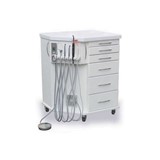





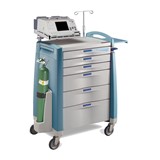


-160x160-state_article-rel-cat.png)

-160x160-state_article-rel-cat.png)




